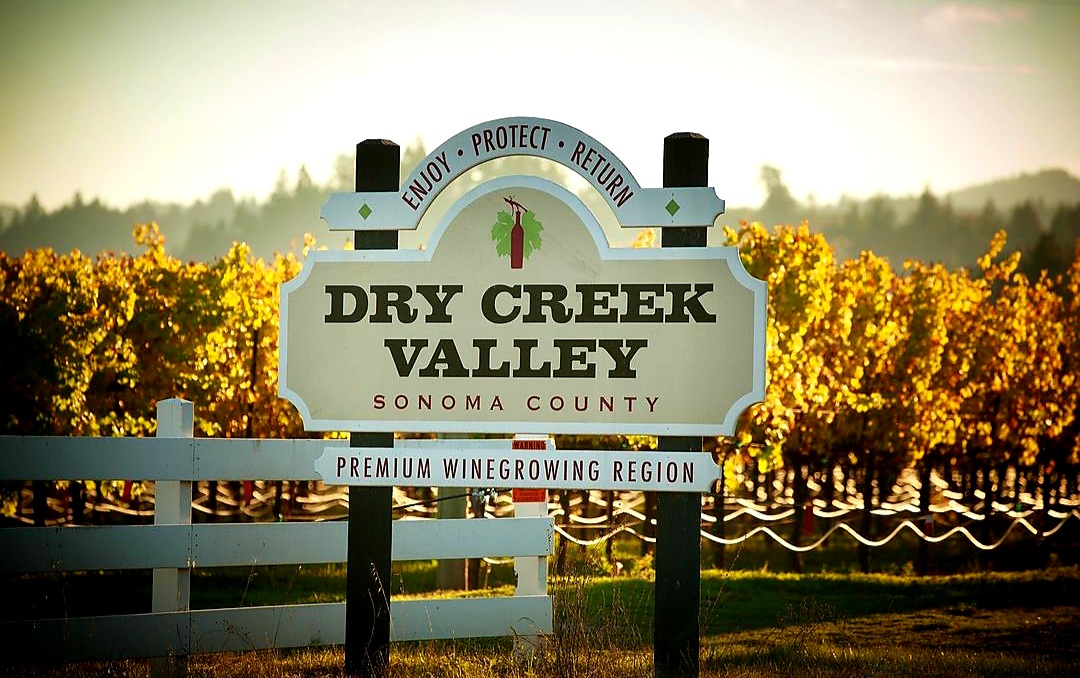The Wolf Post offers a professional service with free access, without subscription.
For this reason, a donation would also be a sign of appreciation for our work.
Dry Creek Valley is a premium wine region in northern Sonoma County, California. More than 150 winegrowers and 60 wineries produce premium wines from a wide variety of grapes, including zinfandel.
The history of grape growing and winemaking in the Dry Creek Valley is among the oldest and most important in California. In 1849, the fertile Dry Creek Valley landscape attracted settlers in the aftermath of the California Gold Rush. In 1869, French immigrant Georges Bloch established the first vineyard and soon co-founds the first winery.
In the late 1800s, Dry Creek Valley expanded rapidly, resulting in nine wineries and 54 separate vineyards totaling 883 acres, with over half of the acreage dedicated to Zinfandel.
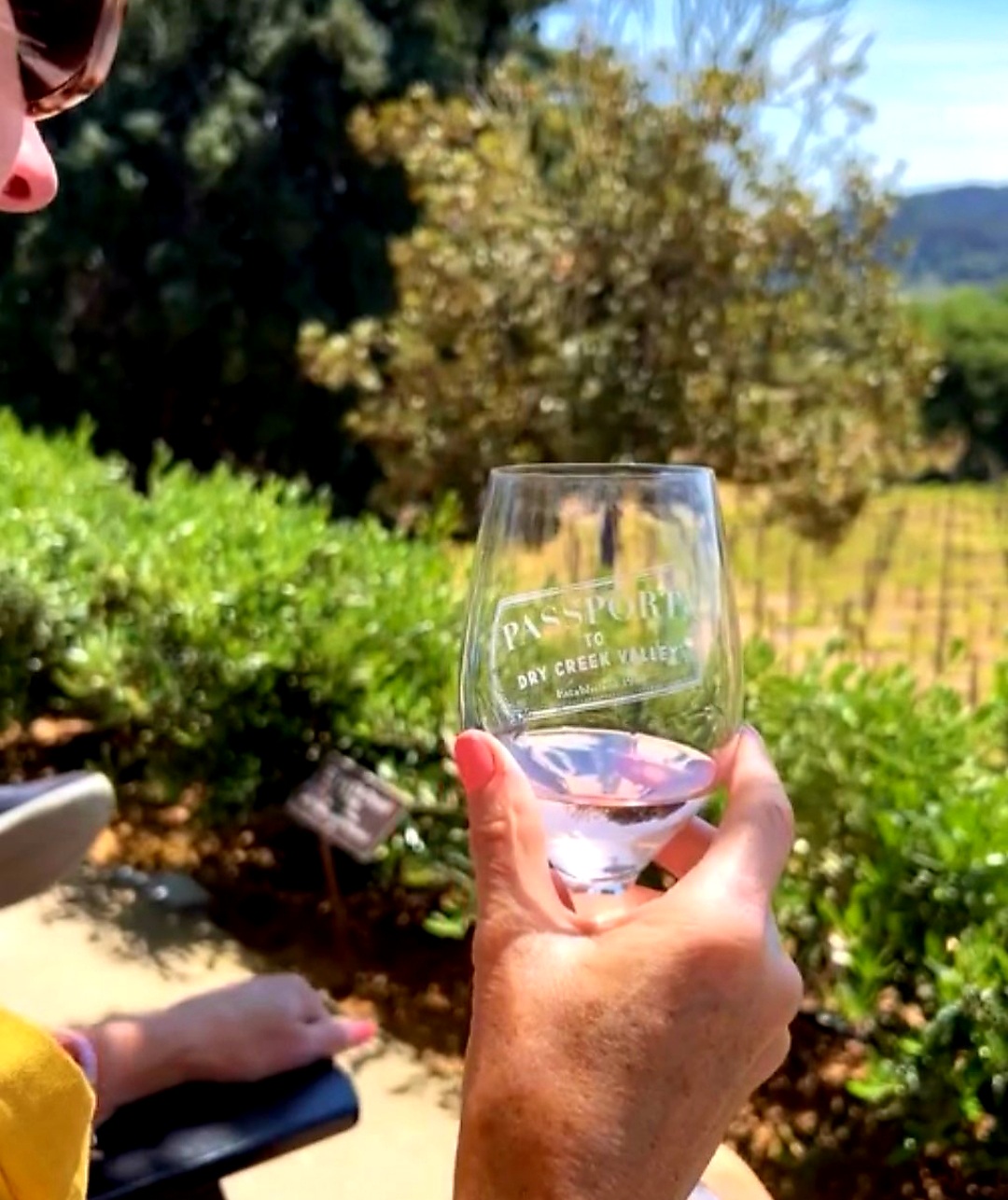
© Dry Creek Valley AVA
The Italians who arrived at the beginning of the twentieth century developed new vineyards and cellars.
After phylloxera and Prohibition, we had to wait until the end of the 1930s for the new wine production.
In 1983, Dry Creek Valley received formal recognition as an American Viticultural Area.
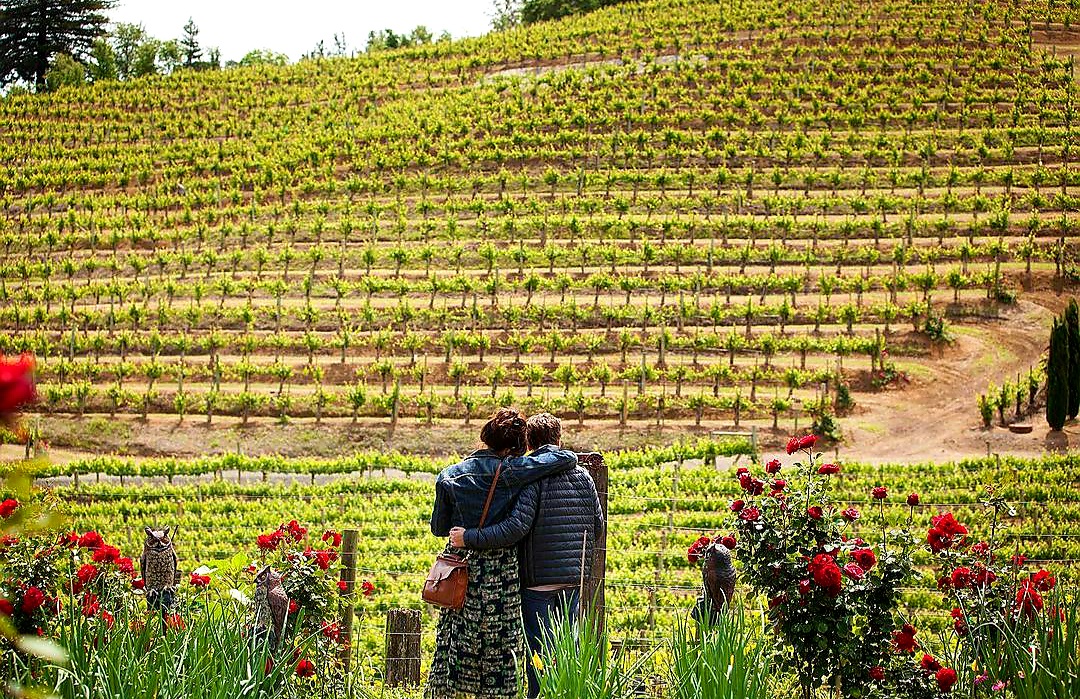
© Dry Creek Valley AVA
Today, Dry Creek Valley is home to 9,000 acres of vineyards that produce exceptional grapes for more than 70 wineries in the valley and others in California.
Dry Creek Valley, one of the smallest AVAs in size (16 miles long by two miles wide) and a dense concentration of land, lowland, and hillside vineyards, was created by uplift and subsidence along ancient seismic faults and from the deposit of alluvial material. This soil, deposited over thousands of years on the valley floor is mainly gravel and sandy – deep, well-drained, fertile soil that produces good crops of flavourful grapes. The soil on the surrounding hills is composed of gravelly clayey loam, often of a striking red colour. This very rocky soil drains exceptionally well, contributing to stressing the vines at the end of the growing season, concentrating the varietal character.
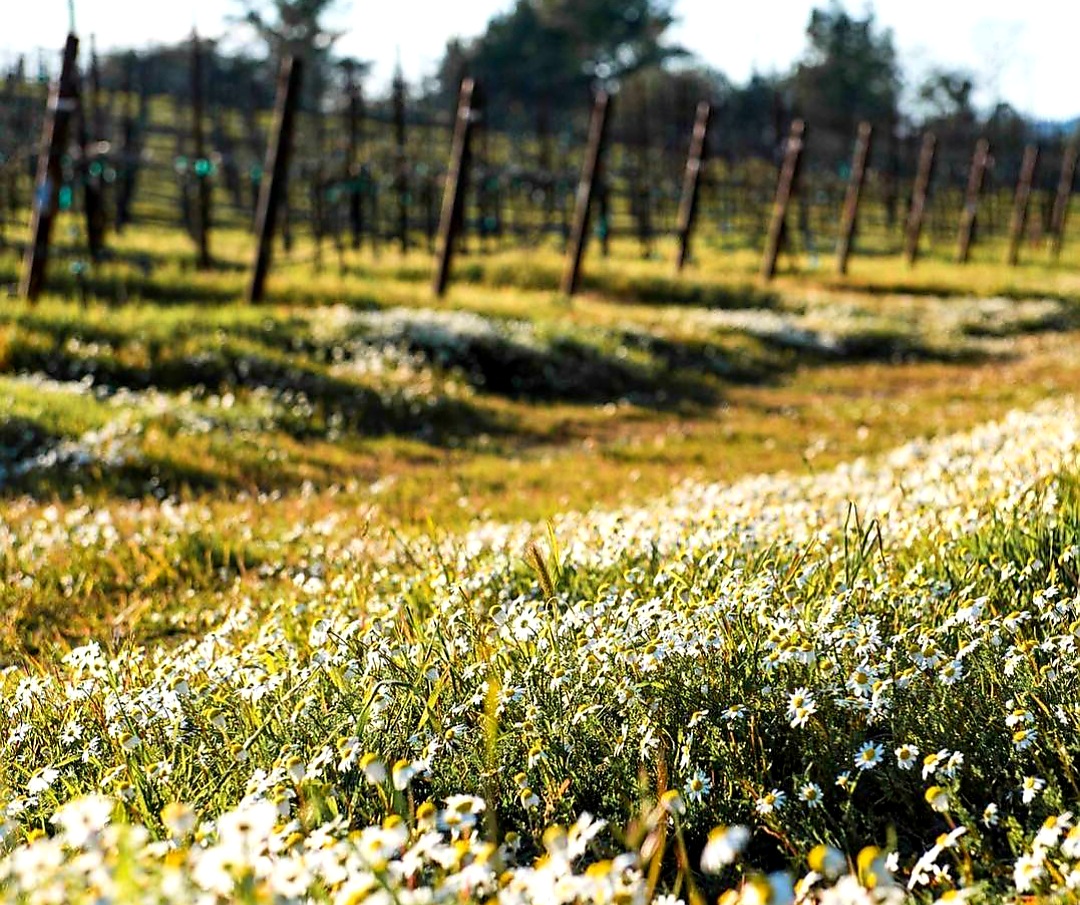
© Dry Creek Valley AVA
Dry Creek Valley is ideally located for wine grapes, 70 miles north of San Francisco and 20 miles east of the Pacific Ocean with both coastal and inland influences, with the nearby Coastal Range also providing a conduit for the cold coastal air and fog that enters at night, drastically lowering temperatures. Long, warm days allow the fruit to fully ripen, while the cool coastal evening allows the grapes to ripen slowly and retain their acidity and balance. These are the perfect growing conditions for Zinfandel and Sauvignon Blanc, the region’s signature wines, as well as the Bordeaux and Rhone varietals.
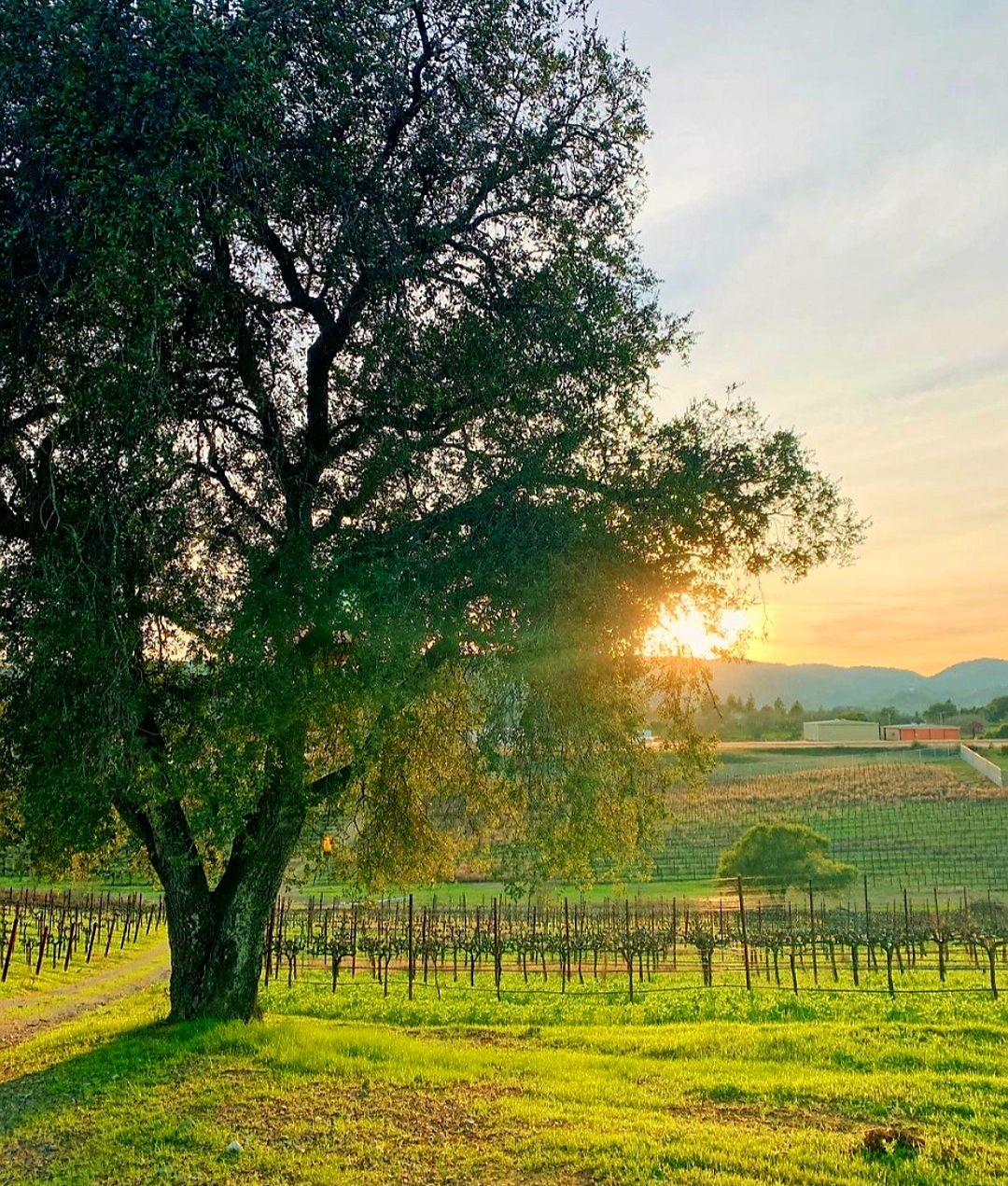
© Dry Creek Valley AVA
The most common soil types found in the Dry Creek Valley are three:
Metamorphic soils are derived from meta volcanics, which are rocks first formed by volcanoes, then recrystallized after being subjected to high pressure and temperatures brought about by the rocks forming on top. These soils are generally found along the western elevations of the valley, are red and rocky with a high iron content and coarser tannins displaying brighter fruit with cherry and red raspberry tones, along with dry floral characters.
Igneous soils are formed by rocks that originate from the earth’s mantle or crust. These rocks come to the surface during volcanic activity and are characterized by a lighter, gravelly brown color. These soils are generally found along the eastern hills and combined with the warmer, gentler slopes and afternoon sun make an excellent home for Bordeaux varietals as well as Zinfandel.
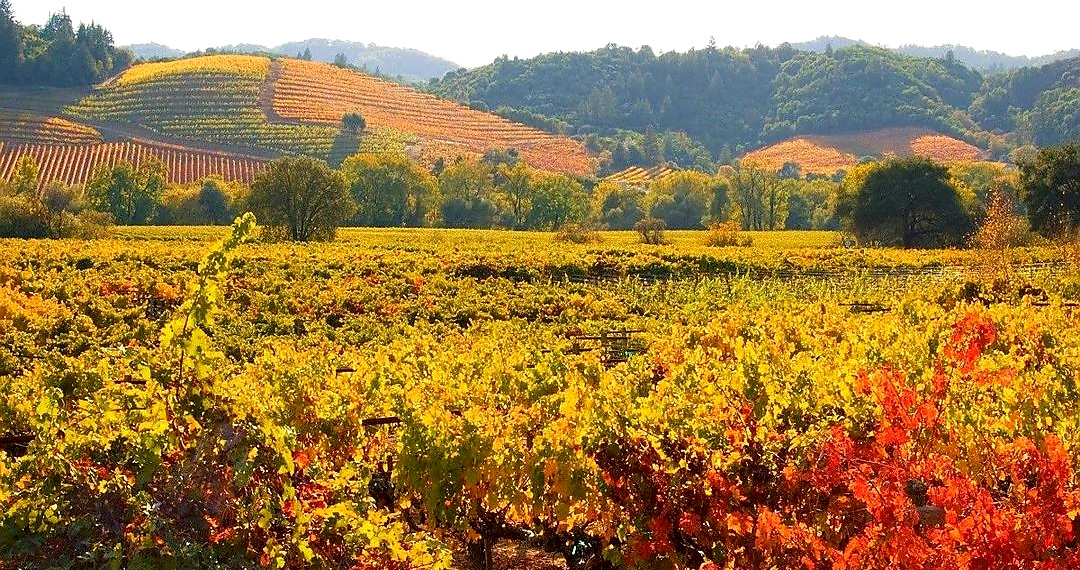
© Dry Creek Valley AVA
Sedimentary soils are produced by rocks that form from the decomposition of material on the Earth’s surface and within bodies of water. It naturally follows that most of the sedimentary soils in Dry Creek Valley are along the valley floor, where flooding was common. These soils are rich in minerals and contain the occasional fossil. Dusty, brown and well drained, these soils are ideal for Sauvignon Blanc and Chardonnay and impart minerality to the wine.
The AVA’s most widely grown grape is Zinfandel with nearly 2,400 acres of Zinfandel.
Almost as planted as Zinfandel, Cabernet Sauvignon thrives in soils composed primarily of clayey gravelly loam that drains very well and stresses the vines at the end of the growing season to produce concentrated character.

© Dry Creek Valley AVA
The Dry Creek Valley terroir is particularly suited to the cultivation of Sauvignon Blanc. Originally brought to Dry Creek Valley in the early 1970s, Sauvignon Blanc thrives along the valley floor where flooding has produced deep, well-drained, mineral-rich soils.
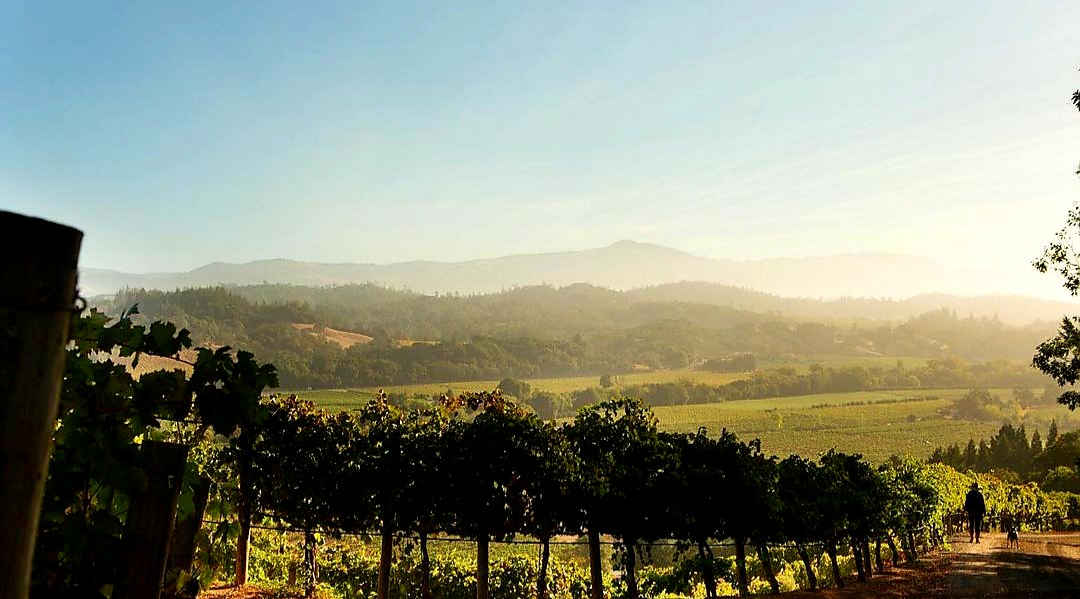
© Dry Creek Valley AVA
In the early 1900s, Italian immigrants planted grapes such as Barbera and Sangiovese that represent their heritage and are still expertly grown throughout the valley today. More than a century of continuous grape cultivation has resulted in a diverse selection of wines that reflect the true culture of Dry Creek.
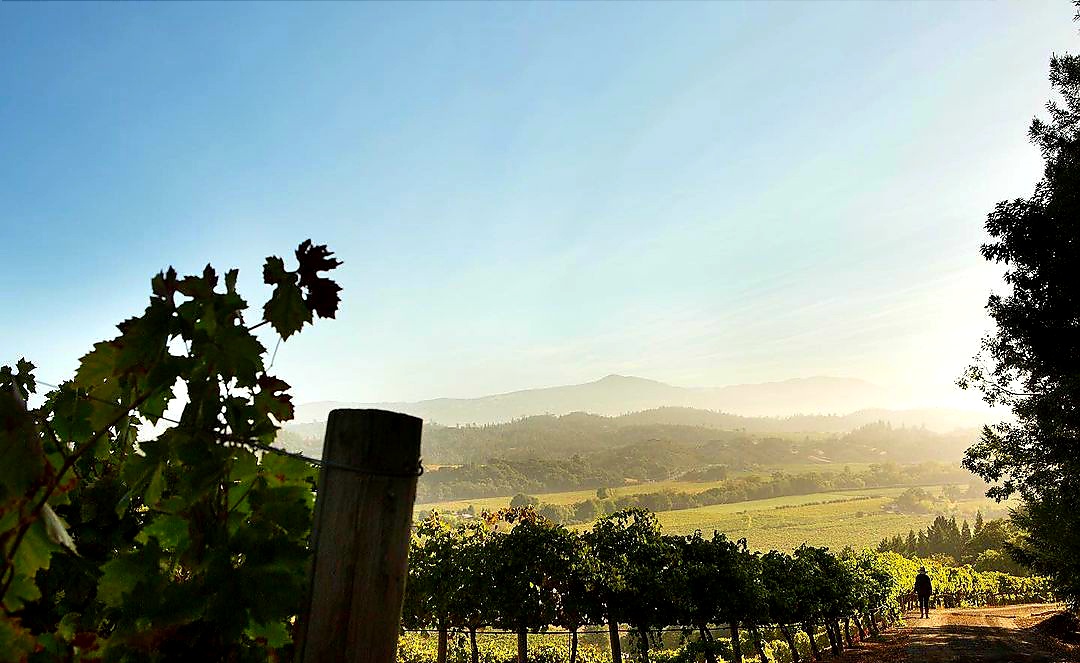
© Dry Creek Valley AVA
Dry Creek Valley is a 100% sustainable wine region. Sustainability is defined by the triple bottom line: a comprehensive set of environmentally sound, socially equitable, and economically viable practices. Sustainable practices are defined by the Code of Sustainable Viticulture, as defined by the California Sustainable Winegrowing article of the Wine Institute.


